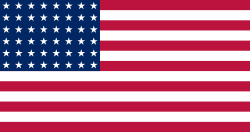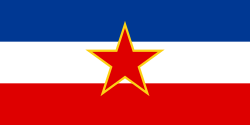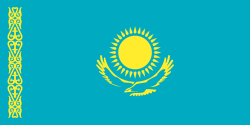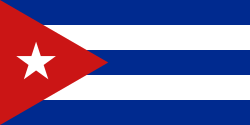Leon Spinks
| Leon Spinks | |
|---|---|
| Narození | 11. července 1953 St. Louis |
| Úmrtí | 5. února 2021 (ve věku 67 let) Henderson |
| Příčina úmrtí | rakovina prostaty |
| Bydliště | Las Vegas |
| Alma mater | Vashon High School |
| Povolání | boxer |
| Některá data mohou pocházet z datové položky. | |
| Přehled medailí | ||
|---|---|---|
| zlato | LOH 1976 | polotěžká váha |
| Mistrovství světa amatérů | ||
| bronz | MS 1974 | kategorie do 81 kg |
Leon Spinks (11. července 1953, St. Louis, Missouri – 5. února 2021, Henderson, Nevada)[1] byl americký boxer.
Sloužil u námořní pěchoty, jako amatér byl mistrem USA v polotěžké váze, získal bronzovou medaili na mistrovství světa amatérů v boxu 1974, stříbrnou na Panamerických hrách 1975 a zlato na Letních olympijských hrách 1976. Po olympiádě přestoupil k profesionálům, v letech 1977–1995 vybojoval 46 zápasů s bilancí 26 výher, 17 porážek a tři remízy. Po překvapivém vítězství nad Muhammadem Alim 15. února 1978 v Las Vegas se stal mistrem světa v těžké váze uznávaným všemi organizacemi. O titul přišel po sedmi měsících v odvetě, kterou Ali vyhrál na body. V roce 1981 vyzval k zápasu o titul mistra světa Larryho Holmese, prohrál technickým K. O. ve třetím kole. V letech 1985–1986 a 1987–1988 byl americkým kontinentálním šampiónem podle World Boxing Council.
Věnoval se také wrestlingu, v roce 1992 se stal mistrem světa organizace Frontier Martial-Arts Wrestling.
Profesionálními mistry světa v boxu byli i jeho mladší bratr Michael Spinks a syn Cory Spinks.
Reference
- ↑ GOLDSTEIN, Richard. Leon Spinks, Boxer Who Took Ali’s Crown and Lost It, Dies at 67. www.nytimes.com [online]. [cit. 2021-02-07]. Dostupné online. (anglicky)
Externí odkazy
 Obrázky, zvuky či videa k tématu Leon Spinks na Wikimedia Commons
Obrázky, zvuky či videa k tématu Leon Spinks na Wikimedia Commons - Leon Spinks v databázi Olympedia (anglicky)
- Encyclopaedia Britannica
- Biography
Média použitá na této stránce
Olympic Rings without "rims" (gaps between the rings), As used, eg. in the logos of the 2008 and 2016 Olympics. The colour scheme applied here was specified in 2023 guidelines.
Olympic Rings without "rims" (gaps between the rings), As used, eg. in the logos of the 2008 and 2016 Olympics. The colour scheme applied here was specified in 2023 guidelines.
US Flag with 48 stars. In use for 47 years from July 4, 1912, to July 3, 1959.
Flag of South Africa, used between 1928 and 1982. It is identical to the 1982 to 1994 version except that the shade of blue is darker. It is also known as the "Oranje-Blanje-Blou".
(c) I, Cmapm, CC BY-SA 3.0
The flag of the Soviet Union (1955-1991) using a darker shade of red.

(c) I, Cmapm, CC BY-SA 3.0
The flag of the Soviet Union (1955-1991) using a darker shade of red.

Flag of the Socialist Federal Republic of Yugoslavia (1946-1992).
The design (blazon) is defined in Article 4 of the Constitution for the Republic of Yugoslavia (1946). [1]
Flag of the Socialist Federal Republic of Yugoslavia (1946-1992).
The design (blazon) is defined in Article 4 of the Constitution for the Republic of Yugoslavia (1946). [1]
Flag of South Africa, used between 1928 and 1982. It is identical to the 1982 to 1994 version except that the shade of blue is darker. It is also known as the "Oranje-Blanje-Blou".
(c) Johnmaxmena na projektu Wikipedie v jazyce angličtina, CC BY 3.0
Leon Spinks boxer in St. Louis (1995).
















